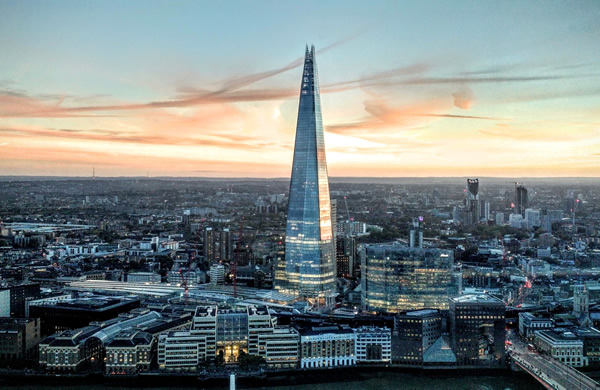
Women – UK Construction industry is crying out for you
Women looking for a rewarding career should give construction close consideration, says Wendy Sayer.
If you’d like to be at the forefront of shaping our future towns and cities, helping to plan, design and build sustainable communities and our national infrastructure, there is a world of opportunity waiting for you in the construction industry. If you are creative, intelligent and determined, the smart move is to look at becoming a project manager, planner, engineer or an architect. Not perhaps your first choice, but well worth thinking about.
Forget about scaffolding, cement, builders’ bums (never a pleasant thought) and wolf-whistles – attitudes towards women in construction are changing. More than 265,000 women already work in the industry. Recruitment agency Randstad estimates the number of women joining is at an all-time high, with plenty of companies actively and deliberately recruiting women.
Greater diversity won’t just make it easier for women to find acceptance on the construction site. According to Louise Ward, Policy and Standards Director at the British Safety Council, a nationally respected provider of health and safety training and qualifications, it could also improve health and safety in the industry. She says: “Women bring unique skills and talents to work. Their different perspective can also help prevent the macho culture that often encourages people to take unnecessary health and safety risks.”
Positive prospects, positive rewards
82% of construction businesses say they can’t find enough skilled workers so attracting more women would certainly help reduce the industry’s chronic skills shortage. The Construction Products Association is also forecasting growth in the sector of 3.0% in 2016 and 3.6% in 2017, driven in part by demand for 300,000 new homes a year, which could create a million more jobs by 2020.
For ambitious women with good degrees, this is great news. Starting salaries for graduate engineers, for instance, are already some of the highest. Even without a degree, there are schemes out there designed to support and encourage people to enter the construction industry. Volunteer It Yourself (VIY) offers opportunities for young people (aged 14-24) to learn construction skills while volunteering on local community projects. 38% of VIY volunteers are women. They include people like Lucy, 16, who gained her City & Guilds qualifications in Health & Safety, Painting, Decorating, and Carpentry while volunteering at the Islington Art Factory.
Reflecting this resurgence of interest in skilled trades, the Women and Manual Trades organisation re-launched in May 2016 as ‘Women on the Tools’. The organisation has been going for 40 years and aims to increase the percentage of women in manual trades but who still only make up 1% of people in manual trades.
Women have been at the heart of construction for hundreds of years
Women shouldn’t fall prey to the idea they have to choose between motherhood and a successful career in construction either. They can still be mothers and invent and engineer great works of art, machines and infrastructure!
When her youngest daughter was just a year old, Sarah Guppy patented a “New Mode of Constructing and Erecting Bridges and Railroads without Arches.” A few years later she gave her designs (for free) to Thomas Telford, who used them to build the world’s first suspension bridge across the Menai Straits… in 1826.
In 1919, pioneering women who had worked as engineers and technicians during the First World War founded the Women’s Engineering Society (WES) to retain their jobs in peacetime. The current CEO of WES, Dawn Bonfield, recently published a report for the Institution of Civil Engineers called ‘Disruptive Diversity’ that reaffirmed the case for women in construction. “Lack of diversity,” she says, “costs the industry in terms of lack of skills, productivity, employee safety and morale, innovation, profit and creativity.”
Women are leading the way
Architect Caroline Cole founded the Equilibrium Network to prove it. “Our aim is to help the construction industry, not simply to promote women” she says, “it’s not just about gender but diversity.” Equilibrium’s research suggests that organisations with greater diversity at a senior level “have a tendency to be more profitable.”
Businesses that embrace diversity also benefit from increased creativity, generate more ideas, and are better able to respond to the challenges of a rapidly changing world.
Holly Porter, another architect and founder of the Chicks with Bricks network, encourages women who want to work in the industry not to be scared of being themselves. “You can be a feminine woman and an intelligent construction professional,” she says. However, as she explains: “You don’t get anywhere in your job by playing on the fact you’re a woman. You have to be good at your job.”
According to the Construction Industry Training Board (CITB), it is a myth that construction is “a dirty industry that’s bad for the environment.” Instead “many construction projects now focus on sustainability and green technologies,” such as solar panels. This makes it an ideal career choice for anyone interested in protecting the environment and building sustainable communities.
The industry is also increasingly making extensive use of digital technology, such as Building Information Modelling (BIM) and Computer Aided Design (CAD). The Go Construct industry website provides more details for geek girls who are keen to find out more about this challenging but dynamic and creative aspect of the industry.
Construction is hard work but well worth the effort
Being a woman in an industry dominated by men can also be a positive point of differentiation that strengthens your career profile. As Casey Elsby, a crane operator at Laing O’Rourke, puts it: “Girls need to know that it’s OK to be interested in jobs that aren’t traditionally stereotypically female.”
According to Randstad, 94% of women in construction say they succeed “through their own hard work, ability and expertise,” rather than any gender bias or quotas. While almost half (49%) of them say their employer is “very” or “extremely” supportive of women. That still leaves plenty of room for improvement but women who take up the challenge today will be the role models of tomorrow.
Latest news

26th July 2024
Enfield Speciality Doors completes world-class project for Atlas Copco HQ
A rundown office and warehouse building completely transformed into a modern headquarters for Atlas Copco has been fitted with more than 120 internal fire doors from Enfield Speciality Doors.
Posted in Access Control & Door Entry Systems, Articles, Building Industry News, Building Products & Structures, Building Systems, Case Studies, Doors, Interior Design & Construction, Interiors, Posts, Restoration & Refurbishment, Retrofit & Renovation, Security and Fire Protection, Sustainability & Energy Efficiency, Timber Buildings and Timber Products, Wooden products
26th July 2024
Abloy UK launches new white paper
Abloy UK, a leading provider of security and access control solutions, has launched a new white paper.
Posted in Access Control & Door Entry Systems, Architectural Ironmongery, Articles, Building Industry News, Building Products & Structures, Building Services, Doors, Facility Management & Building Services, Health & Safety, Information Technology, Innovations & New Products, Publications, Research & Materials Testing, Security and Fire Protection
26th July 2024
MCRMA Member Profile: David Roy, Director of Roofconsult
David Roy of MCRMA member company Roofconsult has more than 50 years’ experience to draw upon working in the building envelope sector and a unique perspective on how it has changed in that time.
Posted in Articles, BIM, Infrastructure & CAD Software, Building Associations & Institutes, Building Industry News, Building Products & Structures, Building Services, Building Systems, Cladding, Information Technology, Restoration & Refurbishment, Retrofit & Renovation, Roofs, Walls
26th July 2024
Strand: Enhancing Door Functionality and Safety
Craig Fox, Sales Director for Strand Hardware, outlines how door industry professionals might apply door limiting stays…
Posted in Architectural Ironmongery, Articles, Building Industry News, Building Products & Structures, Building Services, Doors, Facility Management & Building Services, Health & Safety, Restoration & Refurbishment, Retrofit & Renovation
 Sign up:
Sign up: 